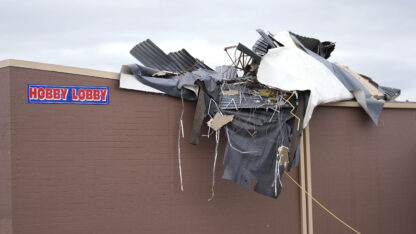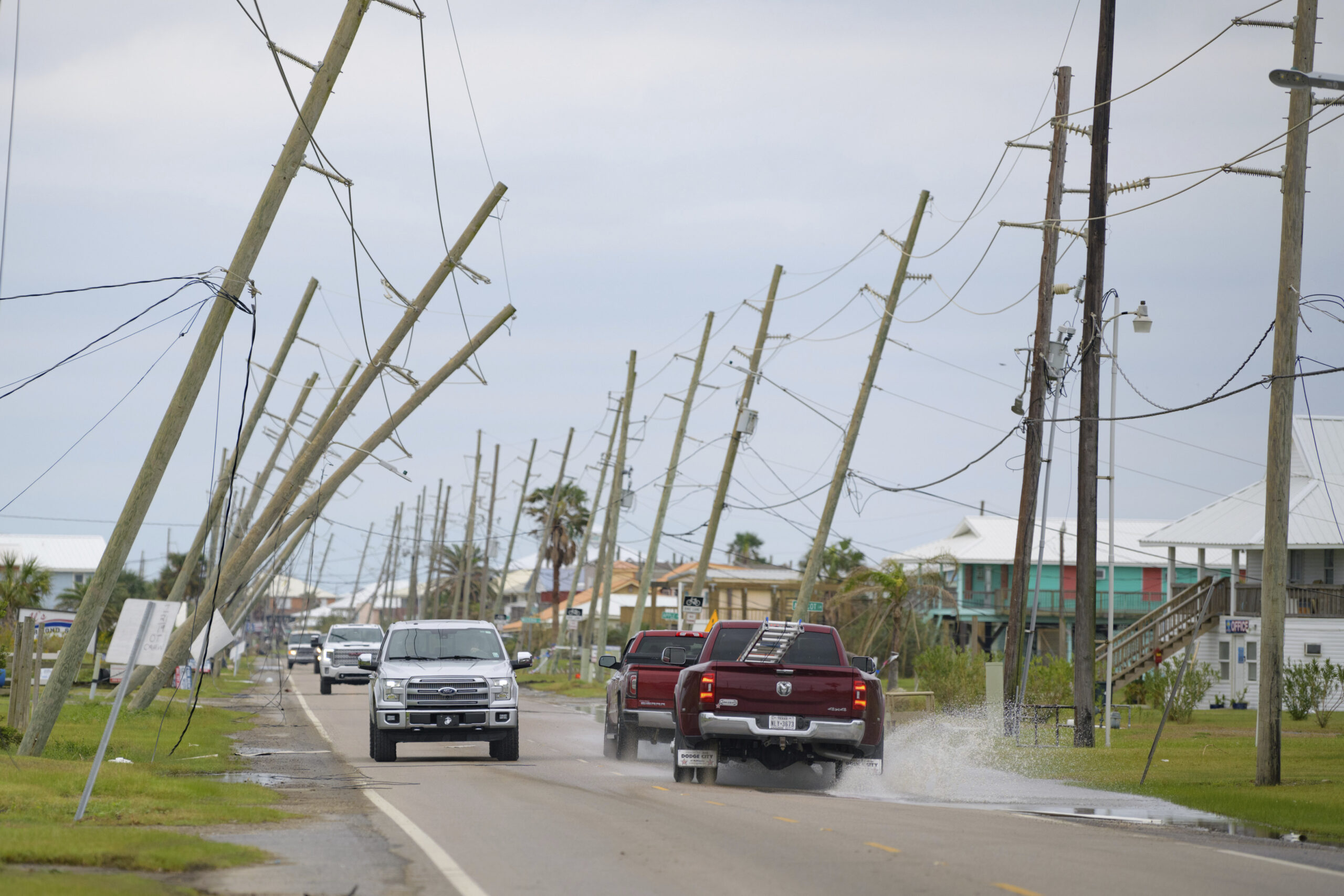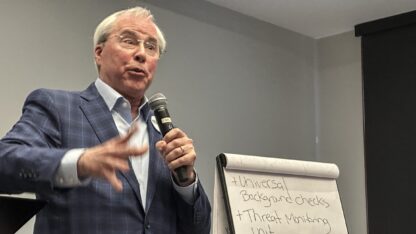New federal laws have lots of money for climate projects – if cities can actually get it
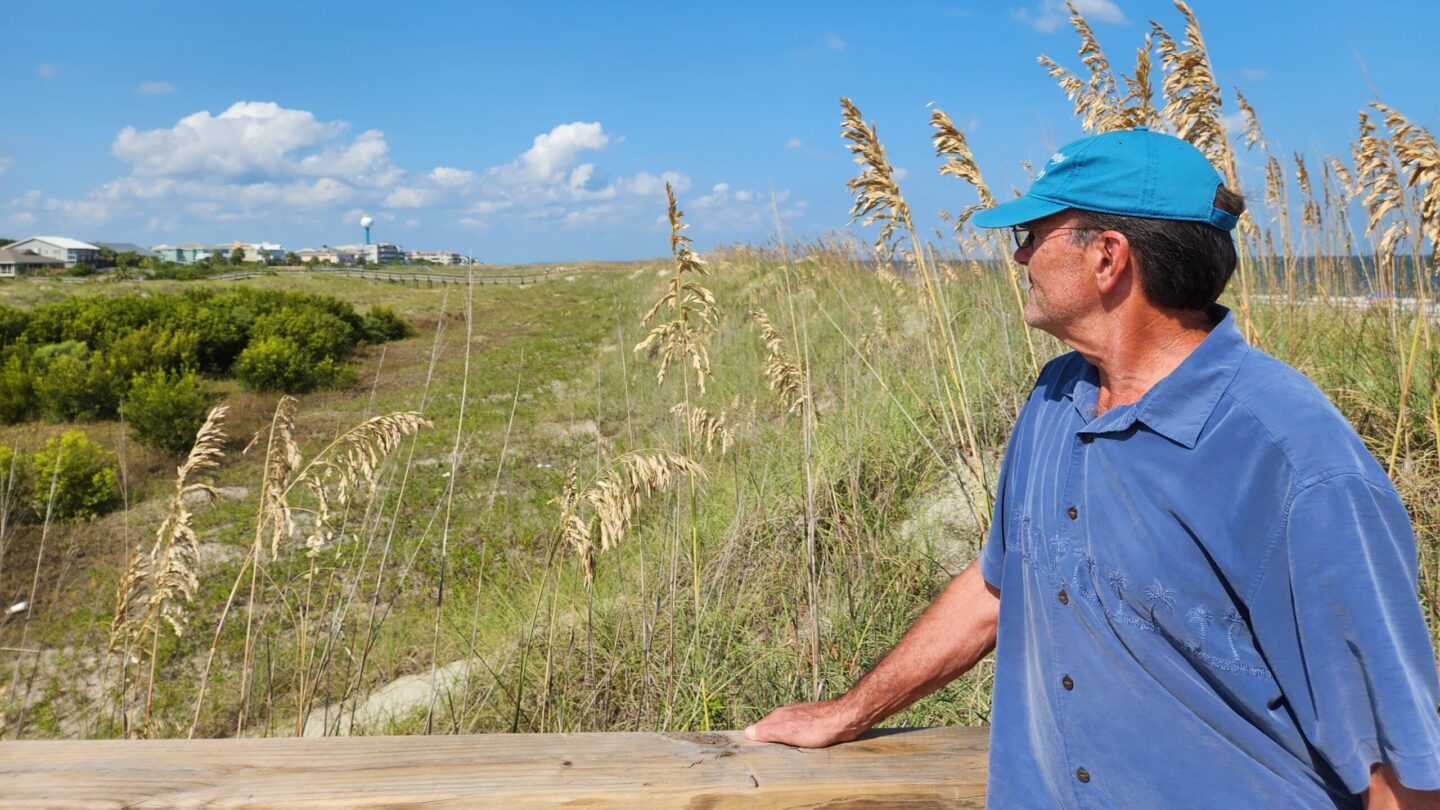
This coverage is made possible through a partnership with WABE and Grist, a nonprofit, independent media organization dedicated to telling stories of climate solutions and a just future.
Tybee Island has a rain problem.
The stormwater system, fed by storm drains across the island, funnels into a pipe that comes out on the beach at the southern tip of Tybee. But that pipe gets regularly buried by sand.
“What happens is when it gets covered with sand, and the tide rises, there’s nowhere for the stormwater to go,” said Alan Robertson, a Tybee resident and consultant for the city.
The water backs up in the system and wells up out of the drains, flooding the roads. It’s a problem the city is trying to solve, Robertson said. And it’s a daily hassle.
“The city has to clear this every day,” Roberston said.
Tybee’s not alone. All over Georgia, old stormwater systems struggle to keep up with increased rainfall due to climate change. On the coast, rising sea levels — also from climate change — squeeze the systems from the other end. Infrastructure like roads, hospitals and wastewater plants need to be shored up against flooding. Residents need protection from heat and floodwater.
All of that is expensive. The good news for local governments tackling these problems is that lots of state and federal money is out there to fund resilience projects. The recent federal infrastructure law and Inflation Reduction Act are adding hundreds of billions of dollars to the pot.
But there’s also bad news: that money is often hard to actually get, and that difficulty can amplify inequities for communities that need help most.
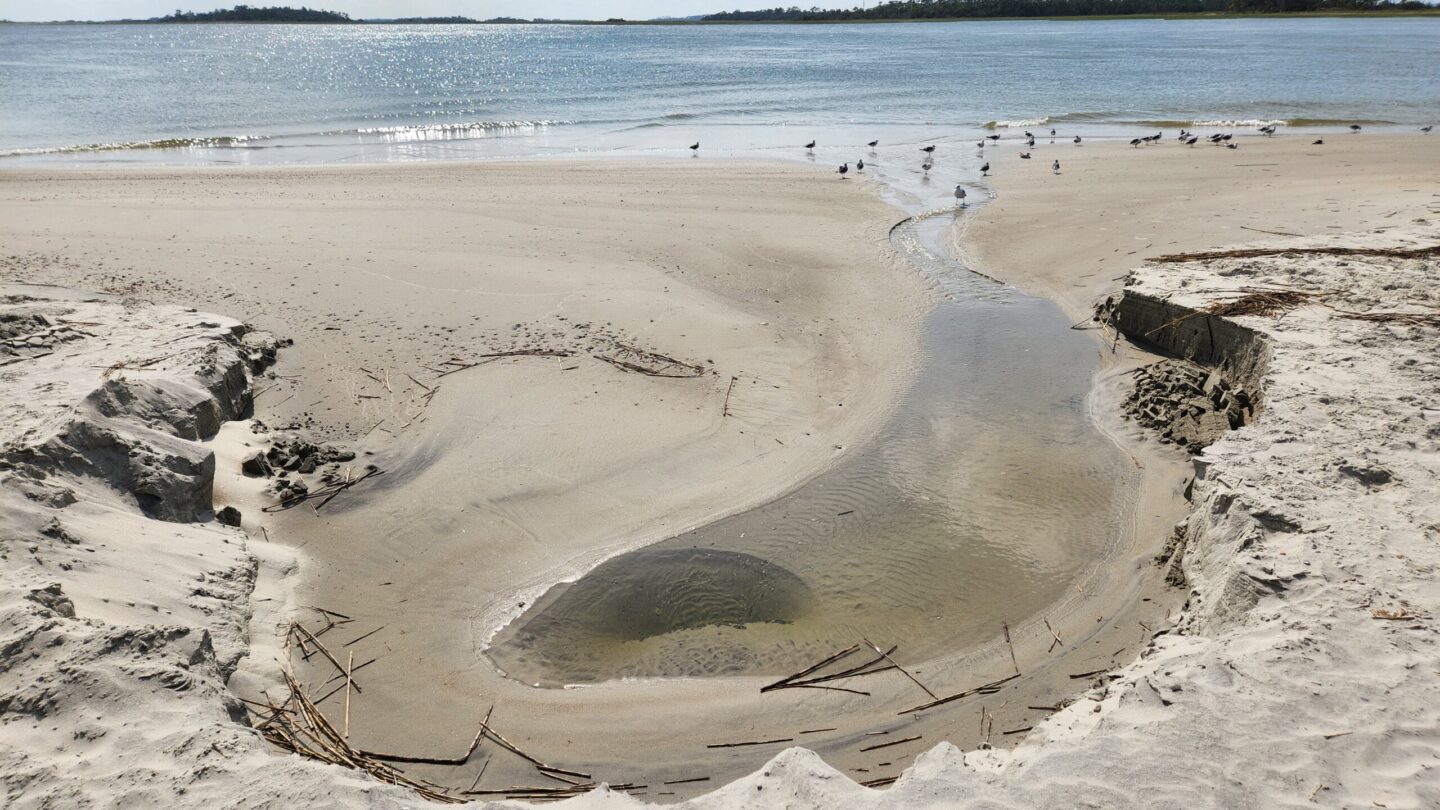
“One of the major capacity constraints of a lot of these local governments are that they have few grant writers on staff,” said Michael Dexter, director of federal programs for the Southeast Sustainability Directors Network.
The funding often comes through competitive grants, which are complicated and highly technical to apply for. Local government staff, often under-resourced and with plenty of work on their plates, can struggle to stay on top of the different funding opportunities, coordinate the necessary partners or come up with the local match funding some grants require.
“A lot of communities shy away from going after grant funds just because of that,” said Jennifer Kline, the coastal hazard specialist with the Georgia Department of Natural Resources Coastal Management Program.
Without a dedicated, expert grant writer and plenty of staff, communities may miss out on these huge amounts of money. That’s especially true in communities of color where old, racist policies like redlining discouraged investment and growth, according to Nathaniel Smith, founder and chief equity officer of the Partnership for Southern Equity.
“If you look at many of the communities that face the greatest challenges, a lot of times people just assume that it happened by happenstance,” Smith said. “And that couldn’t be furthest from the truth.”
For many of the same reasons, those communities stand to be hit hardest by climate change: they often have less shade to reduce heat, are less protected from flooding and face more of the health problems that climate change makes worse.
The Biden administration is trying to address this disparity with its Justice40 initiative, which promises to put 40% of federal climate funding toward historically disadvantaged communities. Through a program called the Justice40 Accelerator, Smith’s group offers funding and technical support to help eligible places get that money.
“It takes real resources and time and support to ensure that local communities are positioned to compete,” he said.
Many of the state and federal agencies that dole out grants offer help as well. Kline’s DNR Coastal Management Program provides assistance. Dexter said his group, the Southeast Sustainability Directors Network, does too.
What’s not clear is whether all of that is enough.
“I was gonna say that’s the $100 million question,” he joked. “No, that’s the $1 trillion, multiple-trillion-dollar question.”
Tybee Island faced down these challenges when Hurricane Matthew devastated the island in 2016. But that city got lucky: Robertson, a resident with grant writing experience, stepped up.
“We’re in a pretty good space now,” he said. “We can be much more responsive to many more opportunities because we have identified these projects.”
While stormwater remains a problem, they’ve gotten grants to build protective dunes and elevate flood-prone houses. Now, Robertson works with the city to keep a running list of projects to fund.
As the wave of new federal funding comes, other communities could use similar help.
